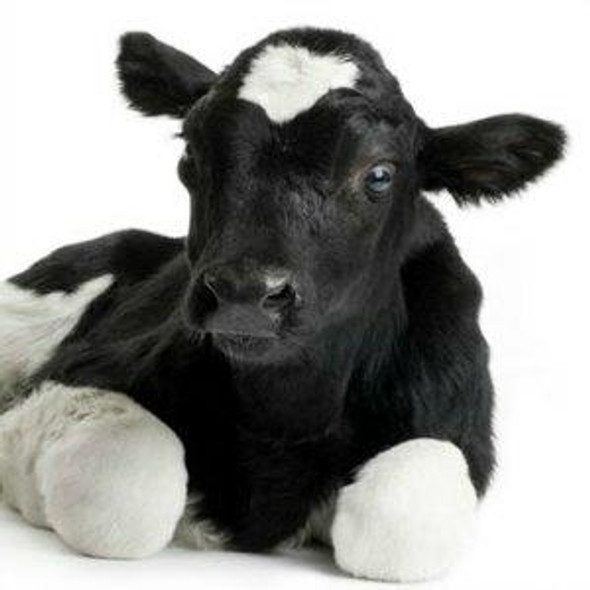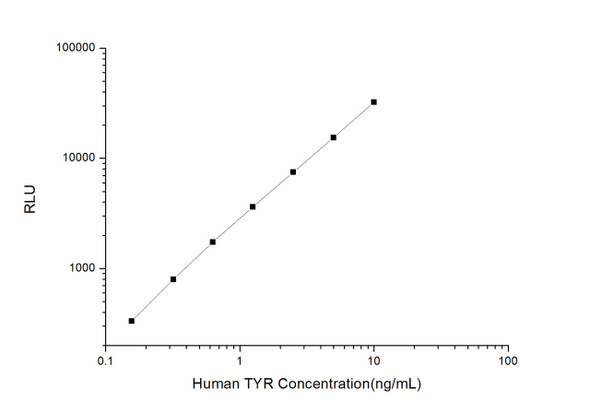Description
Mouse TYR (Tyrosinase) ELISA Kit
The Mouse TYR (Tyrosinase) ELISA Kit is a powerful tool for accurately measuring tyrosinase levels in mouse samples such as serum, plasma, and cell culture supernatants. This kit is known for its high sensitivity and specificity, ensuring precise and reliable results for a variety of research purposes.Tyrosinase is an enzyme that plays a crucial role in melanin production, making it a key player in processes such as pigmentation and protection against UV radiation. Changes in tyrosinase activity have been linked to various skin conditions and disorders, making it a valuable biomarker for studying these conditions and potential therapeutic interventions.
Whether you are studying skin biology, melanin production, or exploring potential treatment options for skin disorders, the Mouse TYR (Tyrosinase) ELISA Kit is an indispensable tool for your research needs. Get accurate and reproducible results with this high-quality kit from Assay Genie.
| Assay type: | Sandwich |
| Format: | 96T |
| Assay time: | 4.5h |
| Reactivity: | Mouse |
| Detection Method: | Colormetric |
| Detection Range: | 0.16-10 ng/mL |
| Sensitivity: | 0.10 ng/mL |
| Sample Volume Required Per Well: | 100µL |
| Sample Type: | Serum, plasma and other biological fluids |
| Specificity: | This kit recognizes Mouse TYR in samples. No significant cross-reactivity or interference between Mouse TYR and analogues was observed. |
This ELISA kit uses Sandwich-ELISA as the method. The micro ELISA plate provided in this kit has been pre-coated with an antibody specific to Mouse TYR. Standards or samples are added to the appropriate micro ELISA plate wells and combined with the specific antibody. Then a biotinylated detection antibody specific for Mouse TYR and Avidin-Horseradish Peroxidase (HRP) conjugate are added to each micro plate well successively and incubated. Free components are washed away. The substrate solution is added to each well. Only those wells that contain Mouse TYR, biotinylated detection antibody and Avidin-HRP conjugate will appear blue in color. The enzyme-substrate reaction is terminated by adding Stop Solution and the color turns yellow. The optical density (OD) is measured spectrophotometrically at a wavelength of 450 nm ± 2 nm. The OD value is proportional to the concentration of Mouse TYR. The concentration of Mouse TYR in samples can be calculated by comparing the OD of the samples to the standard curve.
| UniProt Protein Function: | TYR: This is a copper-containing oxidase that functions in the formation of pigments such as melanins and other polyphenolic compounds. Catalyzes the rate-limiting conversions of tyrosine to DOPA, DOPA to DOPA-quinone and possibly 5,6-dihydroxyindole to indole-5,6 quinone. Increased expression after UVB irradiation. Belongs to the tyrosinase family. 2 isoforms of the human protein are produced by alternative splicing. |
| UniProt Protein Details: | Protein type:Amino Acid Metabolism - tyrosine; Oxidoreductase; EC 1. 14. 18. 1; Membrane protein, integral; Cofactor and Vitamin Metabolism - riboflavin Chromosomal Location of Human Ortholog: 11q14. 3 Cellular Component: lysosome; perinuclear region of cytoplasm; melanosome membrane; cytoplasm; integral to membrane; melanosome; Golgi-associated vesicle Molecular Function:protein binding; protein homodimerization activity; copper ion binding; protein heterodimerization activity; monophenol monooxygenase activity Biological Process: cell proliferation; thymus development; visual perception; melanin biosynthetic process from tyrosine; eye pigment biosynthetic process Disease: Albinism, Ocular, With Sensorineural Deafness; Albinism, Oculocutaneous, Type Ib; Albinism, Oculocutaneous, Type Ia; Skin/hair/eye Pigmentation, Variation In, 3 |
| NCBI Summary: | The enzyme encoded by this gene catalyzes the first 2 steps, and at least 1 subsequent step, in the conversion of tyrosine to melanin. The enzyme has both tyrosine hydroxylase and dopa oxidase catalytic activities, and requires copper for function. Mutations in this gene result in oculocutaneous albinism, and nonpathologic polymorphisms result in skin pigmentation variation. The human genome contains a pseudogene similar to the 3' half of this gene. [provided by RefSeq, Oct 2008] |
| UniProt Code: | P11344 |
| NCBI GenInfo Identifier: | 4507753 |
| NCBI Gene ID: | 7299 |
| NCBI Accession: | NP_000363. 1 |
| UniProt Secondary Accession: | P11344,Q15675, Q15676, Q15680, Q8TAK4, Q9BYY0, Q9BZX1 |
| UniProt Related Accession: | P14679 |
| Molecular Weight: | |
| NCBI Full Name: | tyrosinase |
| NCBI Synonym Full Names: | tyrosinase |
| NCBI Official Symbol: | TYR |
| NCBI Official Synonym Symbols: | ATN; CMM8; OCA1; OCA1A; OCAIA; SHEP3 |
| NCBI Protein Information: | tyrosinase |
| UniProt Protein Name: | Tyrosinase |
| UniProt Synonym Protein Names: | LB24-AB; Monophenol monooxygenase; SK29-AB; Tumor rejection antigen AB |
| Protein Family: | Tyrosinase |
| UniProt Gene Name: | TYR |
| UniProt Entry Name: | TYRO_HUMAN |
As the OD values of the standard curve may vary according to the conditions of the actual assay performance (e. g. operator, pipetting technique, washing technique or temperature effects), the operator should establish a standard curve for each test. Typical standard curve and data is provided below for reference only.
| Concentration (ng/mL) | O.D | Average | Corrected |
| 10 | 2.483 2.533 | 2.508 | 2.441 |
| 5 | 1.758 1.758 | 1.758 | 1.691 |
| 2.5 | 1.017 0.991 | 1.004 | 0.937 |
| 1.25 | 0.452 0.458 | 0.455 | 0.388 |
| 0.63 | 0.295 0.293 | 0.294 | 0.227 |
| 0.32 | 0.186 0.17 | 0.178 | 0.111 |
| 0.16 | 0.121 0.125 | 0.123 | 0.056 |
| 0 | 0.064 0.07 | 0.067 | -- |
Precision
Intra-assay Precision (Precision within an assay): 3 samples with low, mid range and high level Mouse TYR were tested 20 times on one plate, respectively.
Inter-assay Precision (Precision between assays): 3 samples with low, mid range and high level Mouse TYR were tested on 3 different plates, 20 replicates in each plate.
| Intra-assay Precision | Inter-assay Precision | |||||
| Sample | 1 | 2 | 3 | 1 | 2 | 3 |
| n | 20 | 20 | 20 | 20 | 20 | 20 |
| Mean (ng/mL) | 0.52 | 1.15 | 3.44 | 0.48 | 1.26 | 3.23 |
| Standard deviation | 0.03 | 0.06 | 0.17 | 0.03 | 0.06 | 0.15 |
| C V (%) | 5.77 | 5.22 | 4.94 | 6.25 | 4.76 | 4.64 |
Recovery
The recovery of Mouse TYR spiked at three different levels in samples throughout the range of the assay was evaluated in various matrices.
| Sample Type | Range (%) | Average Recovery (%) |
| Serum (n=5) | 88-100 | 93 |
| EDTA plasma (n=5) | 96-108 | 102 |
| Cell culture media (n=5) | 84-97 | 90 |
Linearity
Samples were spiked with high concentrations of Mouse TYR and diluted with Reference Standard & Sample Diluent to produce samples with values within the range of the assay.
| Serum (n=5) | EDTA plasma (n=5) | Cell culture media (n=5) | ||
| 1:2 | Range (%) | 89-104 | 90-101 | 93-106 |
| Average (%) | 95 | 96 | 98 | |
| 1:4 | Range (%) | 92-105 | 83-95 | 90-102 |
| Average (%) | 98 | 87 | 95 | |
| 1:8 | Range (%) | 90-101 | 86-100 | 87-102 |
| Average (%) | 95 | 92 | 94 | |
| 1:16 | Range (%) | 91-106 | 81-93 | 83-97 |
| Average (%) | 98 | 87 | 89 |
An unopened kit can be stored at 4°C for 1 month. If the kit is not used within 1 month, store the items separately according to the following conditions once the kit is received.
| Item | Specifications | Storage |
| Micro ELISA Plate(Dismountable) | 8 wells ×12 strips | -20°C, 6 months |
| Reference Standard | 2 vials | |
| Concentrated Biotinylated Detection Ab (100×) | 1 vial, 120 µL | |
| Concentrated HRP Conjugate (100×) | 1 vial, 120 µL | -20°C(shading light), 6 months |
| Reference Standard & Sample Diluent | 1 vial, 20 mL | 4°C, 6 months |
| Biotinylated Detection Ab Diluent | 1 vial, 14 mL | |
| HRP Conjugate Diluent | 1 vial, 14 mL | |
| Concentrated Wash Buffer (25×) | 1 vial, 30 mL | |
| Substrate Reagent | 1 vial, 10 mL | 4°C(shading light) |
| Stop Solution | 1 vial, 10 mL | 4°C |
| Plate Sealer | 5 pieces | |
| Product Description | 1 copy | |
| Certificate of Analysis | 1 copy |
- Set standard, test sample and control (zero) wells on the pre-coated plate and record theirpositions. It is recommended to measure each standard and sample in duplicate. Note: addall solutions to the bottom of the plate wells while avoiding contact with the well walls. Ensuresolutions do not foam when adding to the wells.
- Aliquot 100µl of standard solutions into the standard wells.
- Add 100µl of Sample / Standard dilution buffer into the control (zero) well.
- Add 100µl of properly diluted sample (serum, plasma, tissue homogenates and otherbiological fluids) into test sample wells.
- Cover the plate with the sealer provided in the kit and incubate for 90 min at 37°C.
- Aspirate the liquid from each well, do not wash. Immediately add 100µL of BiotinylatedDetection Ab working solution to each well. Cover the plate with a plate seal and gently mix. Incubate for 1 hour at 37°C.
- Aspirate or decant the solution from the plate and add 350µL of wash buffer to each welland incubate for 1-2 minutes at room temperature. Aspirate the solution from each well andclap the plate on absorbent filter paper to dry. Repeat this process 3 times. Note: a microplatewasher can be used in this step and other wash steps.
- Add 100µL of HRP Conjugate working solution to each well. Cover with a plate seal andincubate for 30 min at 37°C.
- Aspirate or decant the solution from each well. Repeat the wash process for five times asconducted in step 7.
- Add 90µL of Substrate Reagent to each well. Cover with a new plate seal and incubate forapproximately 15 min at 37°C. Protect the plate from light. Note: the reaction time can beshortened or extended according to the actual color change, but not by more than 30min.
- Add 50 µL of Stop Solution to each well. Note: Adding the stop solution should be done inthe same order as the substrate solution.
- Determine the optical density (OD value) of each well immediately with a microplate readerset at 450 nm.









